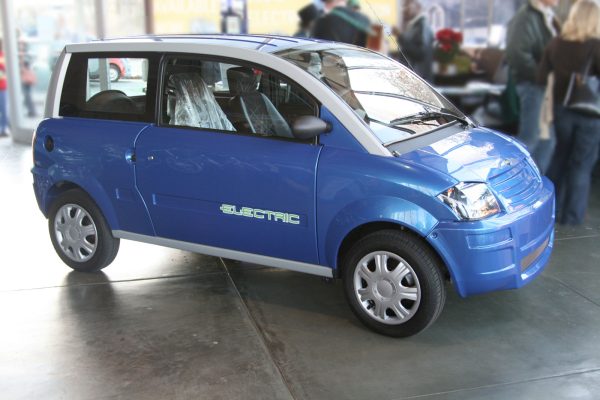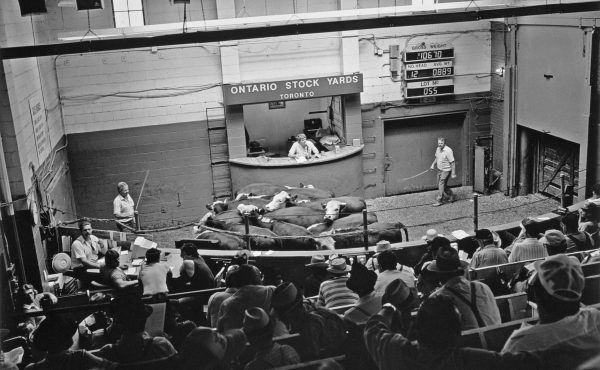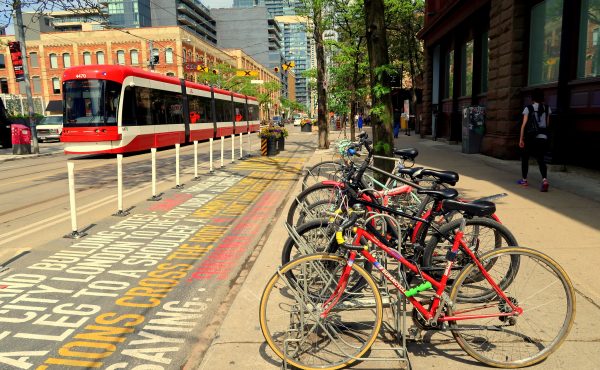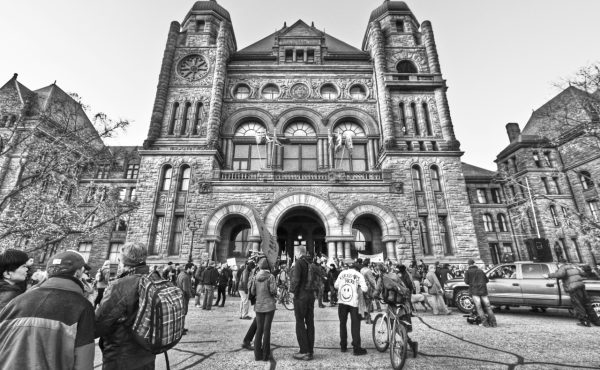Electric cars are in the news, though it’s hard to call them new. Torontonians were impressed when they first saw an electric car on city streets … in 1896. And it’s easy to forget that other types of electric vehicles provided – and still provide – effective transportation options in Toronto.
Today, the federal government is re-thinking — at the urging of the auto industry — a climate action initiative that requires the industry to hit a 20% sales target for electric cars by 2026 (and 100% by 2035). Car-makers say they need more time. History offers some context.
Toronto’s first electric car was a collaboration between inventor William Still and patent lawyer Frederick Fetherstonhaugh. The car, built at the Dixon Carriage Works on Bay Street, had a four hp motor and a top speed of 24km/h. It was powered by a battery that, according to a (perhaps hopeful) media report, provided five hours of running time. Fetherstonhaugh charged the car at home or from the overhead wires of Toronto’s streetcar system. When Canada Cycle & Motor Company (CCM) was formed in 1899, its offerings soon included an electric car.
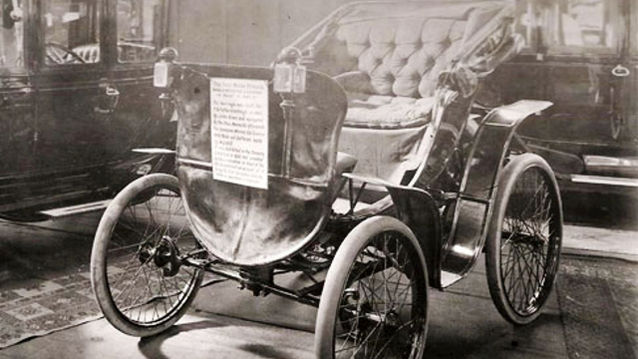
There weren’t many car owners in Toronto in the early 1900s, but among them electric cars were popular, in part because gasoline-powered cars required a troublesome hand crank for ignition.
But other electric vehicles provided more practical — and far more affordable — means of transportation. Electric streetcars got people around the city, and a network of electric interurbans (a type of streetcar) provided travel throughout the region. These electric vehicles were supplemented by human-powered bicycles in the city, and steam-powered trains for longer travel between cities.
Since their initial success in Toronto, electric cars have largely been ignored, mainly due to the high purchase price and limited range – though our one-size-fits-all thinking is another factor. Cars are used to get to the corner store and to drive across Ontario. The early 1970s saw a slight resurgence of electric cars in Canada and the U.S., spurred by the Arab oil embargo and smog. In the 1990s electric cars got another spark, this time from U.S. federal and state regulations and growing concern about climate change. Between 2006 and 2010, Toronto-based ZENN (Zero Emission, No Noise) Motor Company offered two-seater electrics for city travel.
On the other hand, electric vehicles for mass transit have continuously played a prominent — if underappreciated — role in moving people in Toronto.
Unlike other North American cities, Toronto kept its electric streetcars. City residents could also travel on electric trolley buses, especially from the 1940s, until they were discontinued in 1993. These buses, like streetcars, were powered from overhead wires. The TTC added to its EV fleet in the 1950s when the subway was built along Yonge Street, subsequently extended, and today carrying hundreds of thousands of riders daily. Toronto has also recently added battery electric buses. GO Transit is planning for electrification of its trains, a step taken decades ago in Europe.
It’s no surprise that the car industry is crying foul over EV automobile sales requirements, despite over $50 billion in federal and provincial support for EVs since 2021. Public subsidies for Canada’s car industry — which produces far fewer cars today than even in 2018 — have become a habit, instead of a carefully thought out industrial or climate policy. Do public subsidies to the auto sector, in a highly competitive global market, still make sense relative to the payback and potential of other industries? We rarely ask the question.
Meanwhile, EV offerings at car dealerships are typically sparse, often dominated by oversized pickups. Imagine if the car industry spent half the energy and half the billions of dollars it now spends hyping pickups on promoting electric cars.
Yes, by all means, let’s quickly transition to electric cars – but it’s a mistake to simply perpetuate the dominant role of single-occupant cars and their many problems: traffic congestion, the high cost of personal vehicles, and the tragic toll of death and injury from road crashes.
We would do better to invest public funds in public transit buses, streetcars, and trains – all run on electricity – that have met the test of time.
Albert Koehl is an environmental lawyer, coordinator of Community Bikeways, and author of Wheeling Through Toronto, A History of the Bicycle & Its Riders (University of Toronto Press).

